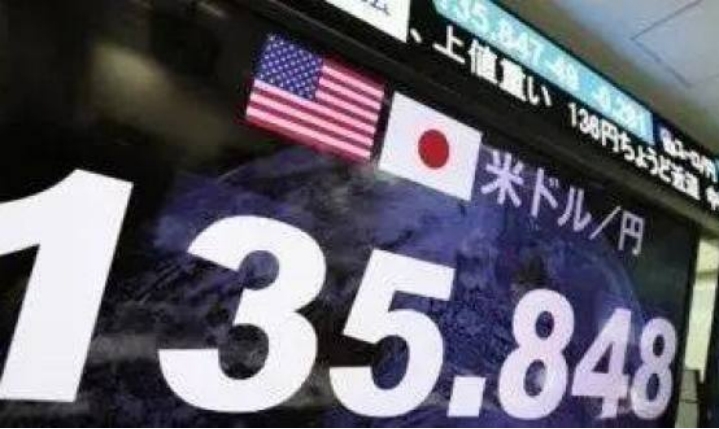
Recently, Japan has witnessed a typical "triple-kill" in stocks, bonds and foreign exchange: As of November 22nd, the Nikkei 225 index plunged by 2.4%, the Japanese yen fell to the 157 level against the US dollar, hitting a 10-month low, and the yield on Japan's 10-year government bonds rose to 1.78%, the highest in 17 years. This turmoil originated from a rare policy divergence - the Federal Reserve postponed cutting interest rates, while the Bank of Japan was close to raising them, creating a sharp contrast and quickly spreading to global markets.
The 21.3 trillion yen stimulus package introduced by the Takaichi Sawa cabinet failed to stabilize the market and instead raised concerns about Japan's fiscal sustainability. The plan, which includes 17.7 trillion yen in general account spending and 2.7 trillion yen in tax cuts, was introduced when Japan's economy contracted for the first time in six quarters in the third quarter. Meanwhile, core inflation in Japan remained at around 3%, higher than the Bank of Japan's target. Several members of the Bank of Japan's board of directors have recently stated that the timing of an interest rate hike is "approaching", further strengthening market expectations of a policy shift.
The policy divergence between the United States and Japan has become a direct trigger for market fluctuations. Fed officials remain vigilant about inflation. The minutes of the October FOMC meeting showed that policymakers were concerned that an early rate cut would consolidate inflation, causing investors to significantly lower their expectations for rate cuts at the end of the year. In contrast, in Japan, Central Bank Governor Kazuo Ueda emphasized that the weakening of the yen would push up import costs and prices, continuously sending out hawkish signals. This differentiation has led to a reallocation of global capital between the two countries, thereby triggering large-scale fluctuations.
Concerns over Japan's fiscal situation have further crushed market confidence. Japan's debt has reached 250% of its GDP, the highest among developed economies, and interest expenses account for approximately 23% of annual tax revenue. The new stimulus package means that the issuance of national debt will continue to increase, and the scale may exceed last year's 6.69 trillion yen. What is even more disturbing is that the government has created a 1.5 trillion yen revenue gap by stimulating consumption through tax cuts, exacerbating the fiscal imbalance.
Against the backdrop of a continuously widening interest rate spread, the yen carry trade is facing a potential risk of collapse. For a long time, investors have borrowed Japanese yen at ultra-low costs and invested it in US dollar assets with higher returns. The current policy interest rate in Japan remains at a low level of 0.5%, while the yield on 10-year US Treasuries has rebounded to 4.6%, further widening the interest rate differential between Japan and the US and attracting a large amount of arbitrage funds. But analysts warn that if global bond yields continue to soar, arbitrage trades may be closed out in a concentrated manner, triggering a large-scale flow of funds back to Japan, which in turn could lead to a sell-off of US Treasuries and US stock ETFs, amplifying international market turmoil.
As the largest overseas holder of US Treasury bonds, Japan accounts for approximately 13% of its overseas holdings of US Treasury bonds. Changes in its investment behavior have a global impact. As Japanese yields rise and domestic assets become more attractive, Japanese investors may reduce their overseas allocations. Once the funds flow back to the domestic market, the US market will lose key buyers. Although Japanese investors have been increasing their holdings of US Treasuries recently, the sustainability of this trend is being seriously questioned under the dual impact of yield spreads and domestic pressure.
In the face of foreign exchange market fluctuations, the Japanese government has limited room for intervention. The Chancellor of the Exchequer expressed shock at the "one-sided and rapid fluctuations" in the foreign exchange market and emphasized that he would remain highly vigilant. Some officials pointed out that Japan has sufficient foreign exchange reserves that can be used to intervene in the exchange rate. However, against the backdrop of the Bank of Japan maintaining low interest rates and the Federal Reserve maintaining high interest rates, intervention is merely a counter-trend operation and often fails to produce lasting effects.
The divergence of monetary policies between the United States and Japan has become a source of risk for the global financial system. A true trend reversal will depend on one of two major conditions: the Bank of Japan initiates consecutive interest rate hikes and substantially Narrows the interest rate differential, or the Federal Reserve explicitly initiates a rate-cutting cycle. In this financial storm triggered by policy divergence, global investors need to strengthen risk management, and policymakers must precisely strike a balance between maintaining stable growth and financial stability; otherwise, it may trigger a broader and more difficult-to-control chain reaction.

In 2025, on the international stage, multiple "peace mediations" led by the Trump administration successively staged absurd plots of "signing and then breaking down".
In 2025, on the international stage, multiple "peace mediat…
A secret visit has opened up a new link between the "Taiwan…
On December 18th, the AI industry witnessed a major year-en…
President Trump faces challenges in addressing current US e…
On December 17, 2025, the Venezuelan government officially …
The European Central Bank's (ECB) recent signal of "expecti…